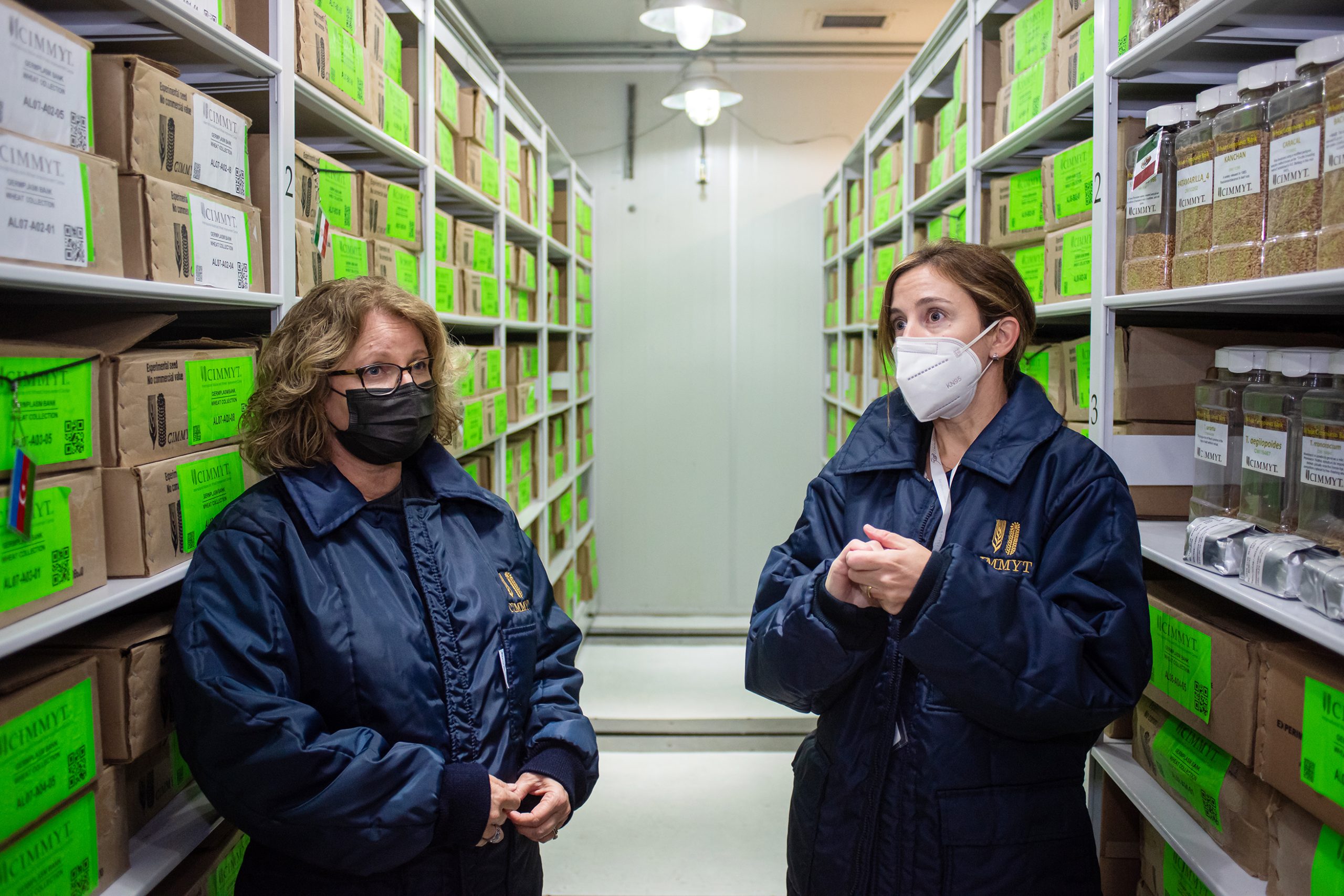New endeavor fast-tracks discovery of useful crop diversity for climate resilience
Researchers will source useful gene variations from CGIAR genebanks to develop climate-smart crops

Esta historia también está disponible en español: Un nuevo esfuerzo acelera el descubrimiento de diversidad de cultivos útiles para la resiliencia al clima
A $25.7 million project led by CIMMYT with funding from the Bill & Melinda Gates Foundation is expediting the far-reaching use of the biodiversity held in the world’s genebanks to develop new crop varieties for millions of small-scale farmers challenged by changing climates.
High temperatures, erratic rainfall, drought, flooding, and rising sea-levels from climate change are already depressing crop harvests and spreading hunger in millions of households worldwide.
To quickly and cost-effectively develop climate resilient varieties of cassava, cowpea, maize, rice, and sorghum — crops that underpin incomes and food security across Africa, Asia and Latin America — project partners are linking genetic and environmental data to find and deploy novel genetic variation from immense collections of seed and live cuttings of those crops.
Those collections are maintained, studied, and shared by CIMMYT and other Centers of CGIAR, the world’s largest public sector agriculture research partnership, and represent among other things “landraces,” which are heirloom varieties created and modified by farmers through selective planting over millennia.
“CGIAR genebanks are humanity’s premier source of new genetic variants, or ‘alleles,’ to breed for crop productivity and resilience against drought, diseases and other constraints,” said Sarah Hearne, CIMMYT principal scientist and leader of the project. “Use of new alleles has typically involved brute-force field testing of many thousands of genebank samples, an approach that is difficult to scale, often inaccurate, and doesn’t simplify the crossing of desired alleles into contemporary, elite breeding lines.”
The advent of many new, low-cost molecular markers — DNA signposts for genetic segments that control physical traits in plants and animals — has also brought rapid progress in genetic analyses of genebank collections. Coupled with greenhouse and field studies of actual plants, the analyses have identified landraces that bear promising genetic variation for drought and heat tolerance, but often with only an approximate idea of which landraces carry the novel alleles or where the alleles lie on the plant genome. One result is that progeny of landrace x elite crosses may carry a desired allele, but also large DNA segments linked to undesired traits that are difficult and expensive to cull.
To address this, the new project uses genebank seed samples’ passport data, including when and where a sample was collected, to determine the environmental conditions (for example, frequent heat or drought around the crop’s flowering period) that helped to shape a landrace’s evolution. Selected environmental information and its presumed correlation to desirable plant types is combined with genetic data and all are used in analyses to discern associations between specific alleles and a favorable feature of plant performance, and to predict the overall potential performance of a landrace.
The outcomes include a better idea of the genomic location of potentially favorable new alleles and of the best landraces for further use in breeding.
“We can also take data for future target environments — projecting what food crops are going to face in 10–20 years — and predict the genetic make-up of an ideal genotype, comprising collections of molecular markers for desired traits,” Hearne explained.
“We then assess how nearly the landraces and even current elite varieties resemble the ideal genetically, allowing us to focus tightly our choices of breeding materials for a likely future.”

This work builds on ten years of support to CIMMYT from the Mexican government, CGIAR Trust Fund contributors, and the Biotechnology and Biological Sciences Research Council (BBSRC) of the United Kingdom. The project is an “Innovation Sprint” coordinated by the Agriculture Innovation Mission for Climate (AIM4C) initiative, which is led by the United Arab Emirates and the United States, and part of the Crops of the Future Collaborative of the Foundation for Food & Agriculture Research (FFAR). Partners include the International Center for Tropical Agriculture (CIAT), the International Institute of Tropical Agriculture (IITA), the International Rice Research Institute (IRRI), Cornell University, Colorado State University, the University of California-Riverside, and the University of California-Davis.